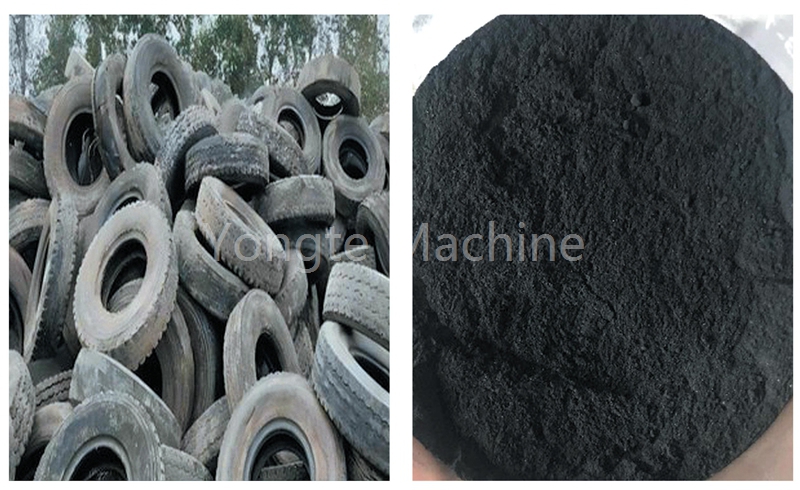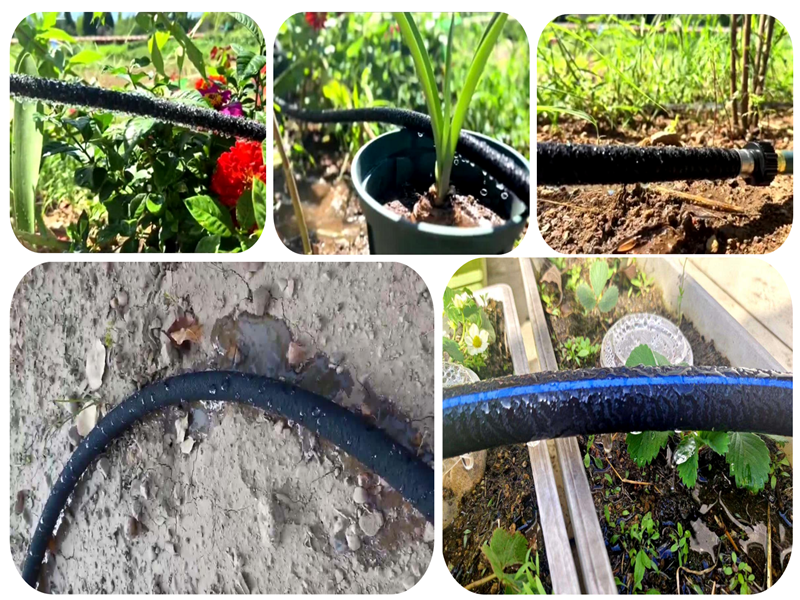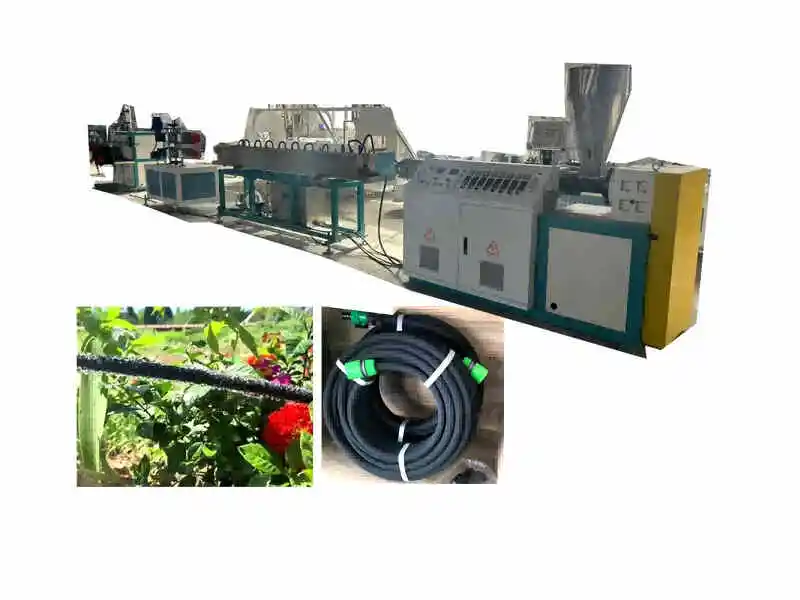Waste tires become water veins: rubber infiltration pipes help desert agriculture
Under the scorching sun in the Middle East, a sea of sand that was once dead now stands with vibrant date palm trees. This green scene is not a miracle of nature, but the result of the "gorgeous transformation" of waste tires - they have been made into rubber infiltration pipes, quietly leading a green revolution in desert agriculture. This technology, which cleverly combines environmental protection and efficient water conservation, is showing its prowess in extremely water-scarce areas in the Middle East and Africa. It not only effectively alleviates the headache-inducing "black pollution", but also brings real hope to food security in arid areas.
Everyone knows that the sun is very toxic in the deserts of the Middle East and Africa, with an average annual evaporation of more than 3,000 mm. In the past, when flooding was used, more than half of the water was "drunk" by God before it could reach the roots of the crops, and the loss rate could reach 60%! But infiltration irrigation technology is different. It can suppress water loss to less than 15%. The secret lies in the inconspicuous rubber tubes underground - they are recycled from waste tires. These tubes are full of nano-scale micropores, just like the capillary network of plant roots, which can accurately and evenly deliver water directly to the mouths of crops. In the agricultural park with photovoltaic panels in Riyadh, Saudi Arabia, this technology was used to directly reduce the water consumption per mu from 800 cubic meters to 320 cubic meters, saving a full 60% of water! What's more, the date palm yield has jumped by 40%. The test results of the Egyptian Desert Research Center are more convincing: the pomegranate garden using rubber infiltration pipes has increased the irrigation water utilization rate from the pitiful 35% of flooding to 85%, and the soil has become "fertile", and the organic matter content has increased by 20%.

Speaking of waste tires, the Middle East can pile up more than 20 million tons every year, and Africa's "black pollution" is also a long-standing problem. These black, non-degradable guys have been transformed into high-performance irrigation pipes through special processes, from garbage that everyone hates to a powerful tool for desert agriculture. The practice of the Royal Farm in Oman shows that the irrigation pipes made of waste tires have been running steadily for 8 years under 70-degree high temperature and strong ultraviolet exposure, and their lifespan is more than twice that of ordinary PE pipes! It is also cost-effective to calculate the economic account. One ton of waste tires can be converted into 500 meters of irrigation pipes, creating a value of nearly 2,000 US dollars. This "turning waste into gold" model has linked a complete green industrial chain. The head of a tire recycling plant in Saudi Arabia is quite proud: "In the past, we had to pay people to landfill waste tires. Now it's good. The steel wire removed can be recycled for steelmaking, and the rubber powder is directly sent to make irrigation pipes, which has become a hot commodity!" It has been calculated that every 100 kilometers of this rubber irrigation pipe can digest 300 tons of waste tire pollution, and the environmental benefits generated are equivalent to the carbon fixed by planting 12,000 trees.

For those small and medium-sized farmers in the Middle East and Africa who are careful with their budgets, the account book of infiltration irrigation technology is even clearer. Although the initial investment is not low, about $1,000 per mu, it can save water and increase production, and the return on investment is fast. There is an example in Qatar. The rubber infiltration irrigation system can earn back the cost in about 5 years of operation, and the subsequent operating cost is only 30% of the traditional drip irrigation. Small farmers in Ethiopia are smarter and have come up with a mixed combination of "bamboo pipe + rubber infiltration irrigation". The initial investment has been reduced by 80%, but the corn yield has soared from 2.5 tons per hectare to 8 tons. Who would not be tempted by this increase in production? The government's role in pushing it is also not small. Saudi Arabia directly included this set of equipment in the list of agricultural subsidies, and the government paid half of it; Egypt is even more ambitious and plans to promote 1 million mu of infiltration irrigation systems by 2025; the smart irrigation laboratory jointly established by China and the UAE and other countries has also built 7 demonstration sites in Oman, the UAE and other places. After these actions, the input-output ratio of desert agriculture has generally doubled or tripled. What's more gratifying is that it has also brought a new industrial chain to the forefront - in Dubai alone, there are many companies specializing in the business of recycled waste tire irrigation pipes, which has solved the rice bowl problem for thousands of people.

Today, from the continuous photovoltaic agricultural parks in Saudi Arabia to the terraced fields in Ethiopia, from the ancient oases in Egypt to the newly reclaimed desert orchards in Namibia, this rubber infiltration irrigation technology derived from waste tires is really taking root in the sand. When the "black" of tires and the "gold" of the desert collide to create a hopeful "green", this technological revolution that combines the concept of extreme water conservation and recycling environmental protection not only profoundly reshapes the agricultural landscape in the arid areas of the Middle East and Africa, but also explores a "desert survival method" worthy of reference for places suffering from drought around the world.